At Maraná, we produce chocolates that provide experiences of unique flavors. We work in small batches and in an artisanal way, which allows each batch of cocoa to reflect its own personality through its flavors and aromas captured in our chocolate bars.

We are a “Bean-to-Bar” company, which means that we are involved in the process from the cultivation of cocoa to the chocolate bar.

The Cultivation:
In the cultivation stage, we study the varieties of cocoa that we use to work with mastery in each link of the process, thus highlighting the flavors and aromas of cocoa in a delicate, balanced, and creamy chocolate bar.
The fruit of the cocoa grows between the parallels +20° and -20° degrees of north and south latitude of the Equator. It is native to the Amazon Basin and its scientific name is “Theobroma Cacao,” which means “Food of the Gods.”

Currently, there are two groups of cocoa, the “Common Cacaos” and the “Fine Aroma Cacaos.” The latter brings with it a complexity of unique aromas and flavors and represents only 5% of the total cocoa production in the world.
That is why at Maraná we have dedicated a lot of time to finding three unique varieties of Peruvian “Fine Aroma” cocoa that will surprise you with their intense and fresh fruity notes.
The three types of Fine Aroma cocoa we work with:

Type of cocoa: Amazonian
Place of Origin: San Martín Region - Peru
Country: Peru.

Type of cocoa: Chuncho
Place of Origin: Cusco Region - Peru
Country: Peru

Type of cocoa: White
Place of Origin: Piura Region - Peru
Country: Peru
The Process in the Field

Harvest:
Our cocoa is harvested once a year for periods of four months. It is very important that the harvest is done at the optimal point of ripeness so that the cocoa fruit arrives with a good amount of sugar and optimal fermentation occurs. The harvesting process consists of removing the pods from the tree, cutting them with a small machete without damaging the beans, then removing these beans and placing them in bags or buckets to take them to the fermentation center of their Cooperative. One of the major challenges of this process that takes place in the cocoa fields is the immediate transfer of the cocoa pulp to the fermentation centers, as once the pod is cut from the tree, the fermentation process begins.

Fermentation:
This process is crucial for having good cocoa, as good fermentation allows the cocoa beans to express all their flavors and aromas. This is done by placing the cocoa beans in wooden boxes covered with banana leaves and jute sacks for about 3 to 7 days (depending on the type of cocoa). This part of the process causes a chemical reaction generating acetic and lactic acid that kills the seed and prevents it from germinating. This allows the flavors to emerge and be enhanced.

Drying:
This process is very important to round out the fermentation; here what we seek is to dry the cocoa slowly so that it eliminates all the acids generated during fermentation and at the same time the cocoa bean reaches a moisture level of 6% to protect the cocoa and ensure a long shelf life in optimal conditions. Once the cocoa is dried, it is placed in bags and stored in the cooperative ready to be dispatched.
The process at the Factory

Roasting:
Once the cocoa beans arrive at the Maraná factory, they go through a quality control to eliminate any impurities inherent to the cocoa and only keep the best beans. Once this is done, three cocoa samples are taken to test different roasting profiles and choose the one that best expresses the flavors and aromas of that batch of cocoa. Once the best roasting profile is chosen, we roast our cocoa slowly, with the aim of bringing out all the flavors generated during the fermentation process. This is where our chocolate takes on its full personality.

Shelling:
In the shelling process, we seek to separate the cacao nib from its shell, becoming the “Cacao Nib.” This is done because some flavors from the fermentation remain in the shell that we do not want in our chocolate. That is why we have a very meticulous process to ensure the removal of the shell and to obtain a clean and pure cacao nib.

Formulation:
At Maraná, we use three ingredients to make our Dark chocolate (Organic Cacao Nib, Cocoa Butter, and Organic Cane Sugar) and for our Milk chocolate, we only add one more ingredient (Skim Milk). At this stage, we define the quantities of the ingredients and the techniques of the Refining and Conching processes.

Refining:
Once the formulation is made, we place all the ingredients in our granite stone refiner to start the chocolate process. This artisanal and ancestral technique of making chocolate creates a smooth texture, allowing the flavors of the chocolate to emerge throughout the process in a very special way. Once the desired particle size of the mixture is reached, the pressure from the stones of the machine is released, and the conching process begins.

Conching:
In this process, we seek to ensure that the fat particles evenly coat the solid particles to generate a unique creaminess and texture.

Tempering and molding:
To create a unique experience, tempering is a key process that occurs through a play of temperatures and agitation of the chocolate. This generates a chemical reaction, producing crystals that give shine to the chocolate, a perfect rigidity that makes a dry sound (called “Snap”) when broken, and achieves the melting point in the mouth so that the chocolate expresses all its flavors in a unique and harmonious way. Once the chocolate is properly tempered in our machine, it is poured into molds to finally bring the Maraná chocolate tablets to life.

Packaging:
The tablets are manually packaged. The first packaging is a flowpack that allows the chocolate to be well sealed, thus preserving all its aromas; in addition, it protects it from moisture and any external elements, always obtaining chocolate in optimal conditions. Finally, it is dressed with paper packaging that reflects the origin and culture of our Peru.
Don't miss the chance to try them.



